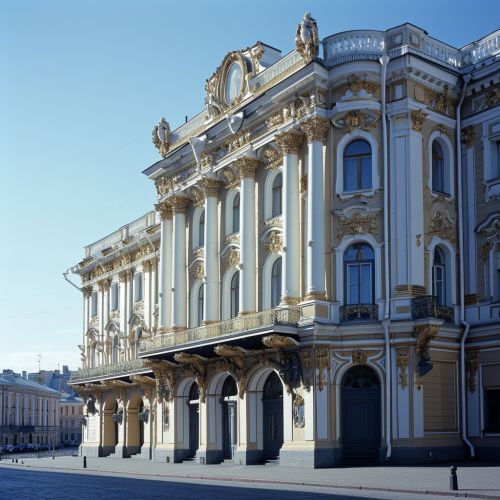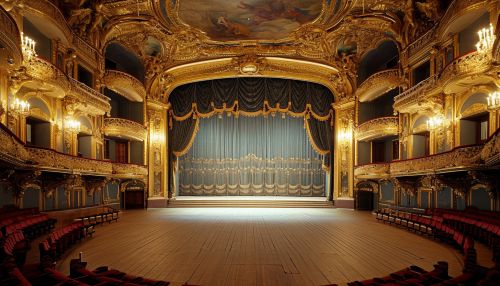Mariinsky Ballet
History
The Mariinsky Ballet is one of the oldest ballet companies in the world, tracing its origins back to the Imperial Russian Ballet founded in the 18th century. The company was established in 1740 by Empress Anna, the ruler of Russia at the time, as part of her efforts to westernize the country. The company was initially composed of serfs and was managed by the Imperial Theatres, an organization responsible for all theatrical productions in the imperial court.
In the early years, the company performed mainly French and Italian works, but by the late 18th century, it had begun to develop a distinctly Russian style. This was largely due to the influence of choreographer Charles Didelot, who introduced innovative techniques and concepts that would become fundamental to the development of classical ballet.
In 1860, the company was renamed the Imperial Mariinsky Theatre, in honor of Empress Maria Alexandrovna, wife of Tsar Alexander II. During this period, the company produced many of the masterpieces of the classical ballet repertoire, including Swan Lake, The Nutcracker, and Sleeping Beauty, all choreographed by Marius Petipa, who is often considered the father of classical ballet.
Following the Russian Revolution in 1917, the Mariinsky Ballet underwent significant changes. The company was nationalized and renamed the State Academic Mariinsky Theatre. Despite the political upheaval, the company continued to thrive, producing innovative new works and nurturing some of the greatest ballet dancers of the 20th century, including Anna Pavlova, Vaslav Nijinsky, and Rudolf Nureyev.
In the post-Soviet era, the Mariinsky Ballet has continued to be a leading force in the world of ballet, known for its commitment to preserving the traditions of classical ballet while also embracing contemporary works. The company's repertoire includes not only the classics of the 19th century but also works by modern choreographers such as George Balanchine, John Neumeier, and William Forsythe.


Repertoire
The Mariinsky Ballet's repertoire is vast and diverse, encompassing works from the classical, neoclassical, and contemporary periods. The company is perhaps best known for its performances of the 19th-century classics, many of which were created by Marius Petipa during his tenure as ballet master.
Among the company's most celebrated productions are Swan Lake, The Nutcracker, and Sleeping Beauty, all of which are performed with a level of technical precision and artistic integrity that is characteristic of the Mariinsky Ballet. These works, with their intricate choreography and demanding roles, showcase the exceptional skill and artistry of the company's dancers.
In addition to the classics, the Mariinsky Ballet's repertoire also includes works by 20th-century choreographers such as George Balanchine, whose neoclassical style has had a significant influence on the company. Balanchine's works, including Serenade, Jewels, and Symphony in C, are regularly performed by the company.
The company also performs works by contemporary choreographers, reflecting its commitment to innovation and artistic evolution. These include pieces by John Neumeier, William Forsythe, and Alexei Ratmansky, among others.
Dancers
The Mariinsky Ballet has been home to some of the most renowned dancers in the history of ballet. These dancers, with their exceptional talent and dedication, have played a crucial role in shaping the company's reputation as one of the world's leading ballet companies.
Among the company's most famous dancers are Anna Pavlova, Vaslav Nijinsky, and Rudolf Nureyev. Pavlova, known for her extraordinary grace and expressiveness, was one of the first dancers to achieve international fame. Nijinsky, with his remarkable technical abilities and innovative approach to dance, is often considered one of the greatest male dancers of the 20th century. Nureyev, who defected from the Soviet Union in 1961, was known for his charismatic performances and his contributions to the development of ballet in the West.
The company continues to nurture exceptional talent, with its current roster of dancers including some of the most acclaimed performers in contemporary ballet. These dancers, with their technical prowess and artistic sensitivity, uphold the company's tradition of excellence, ensuring its continued prominence in the world of ballet.
Training
The Mariinsky Ballet's dancers are trained at the Vaganova Academy, one of the world's leading ballet schools. The academy, which was established in 1738, is known for its rigorous training program, which emphasizes technical precision, strength, and artistic expression.
The training at the Vaganova Academy is based on the Vaganova method, a system of ballet training that was developed by Agrippina Vaganova in the early 20th century. The method, which combines elements of the French and Italian schools of ballet with a focus on the Russian tradition, is renowned for its ability to produce dancers of exceptional skill and artistry.
The academy's graduates include many of the Mariinsky Ballet's most celebrated dancers, as well as numerous other prominent figures in the world of ballet. The close relationship between the academy and the company ensures a steady supply of highly trained dancers, contributing to the company's continued success.
